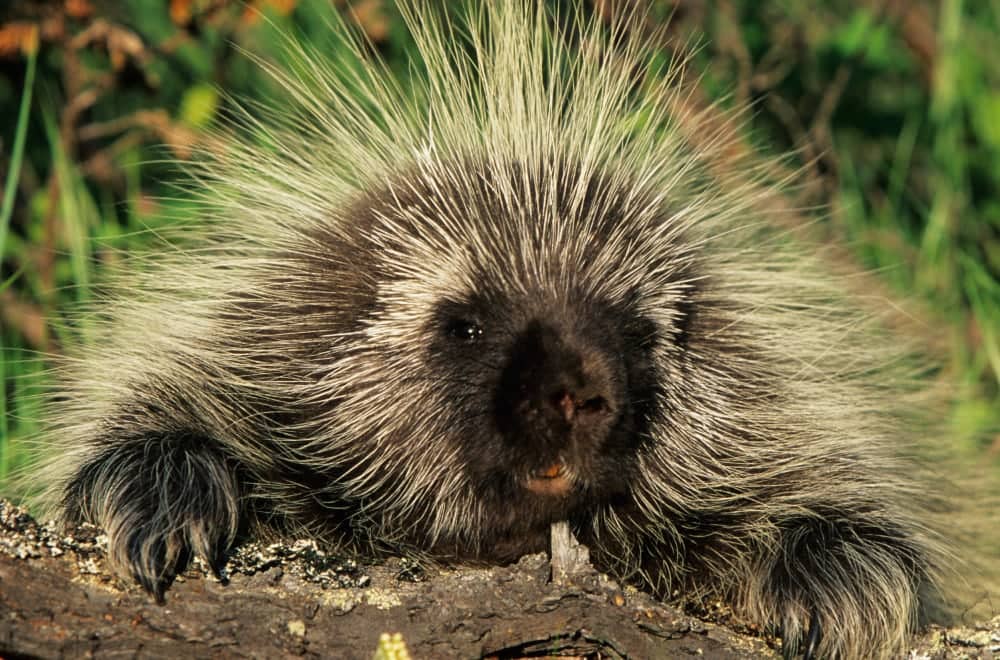Situations and Solutions
Porcupine quills in dog: The only remedy is to pull the quills out which is a painful procedure as the quills are barbed on the ends. Pull them out using a pair of pliers. Do not cut the quills as this will make removal more difficult. It is a myth that cutting will cause them to deflate. Once the quills are removed, disinfect the wounds with hydrogen peroxide. Allow the dog to lick or nurse its wounds, which should heal relatively quickly. If removing them yourself is not an option, consult your veterinarian.
Porcupines chewing trees: An urban myth is that porcupines destroy a vast number of trees by chewing on them. Studies show that under 5% of trees chewed by porcupines are actually killed. For small, ornamental trees, wrap the base with wire to prevent chewing. Tree bases can also be wrapped with a slippery metal to a height of about 1m to prevent porcupines from climbing them. A fantastic solution is to apply a very effective pest deterrent spray called “Bobbex”. It is very smelly and deters a wide variety of species.
Porcupines chewing other things: Porcupines often wander into people yards looking for salt. They will sometimes chew on shovels, broom handles, tires, and saddles because of the salt absorbed in them. Solutions include keeping tools and leather goods picked up and locked away. Set out a salt lick in a remote area on your property. This provides the salt the animal needs but helps to keep them from coming too close.
A last resort solution is to humanely live trap and relocate the porcupine causing the trouble. This is only a temporary fix because if your yard has food and shelter, another porcupine will move in. Addressing the root of the problem is the best long-term solution. Making your yard unattractive to porcupines includes removing low-hanging bird feeders and keeping the surrounding area clean of seeds, use of motion-sensor sprinklers, and not re-planting foliage that appealed to them in the first place.
Natural History
Porcupines are the second largest rodent on the North American continent. They have strong heads, thick, short legs, small ears and eyes and sharp front claws for climbing. They have a thick coat of hair interspersed with long bristles and stiff quills. Estimates are that porcupines have over 30,000 quills on their back and tail. Their only defence against predators is their quills. When frightened they turn their tail towards the enemy. Porcupines cannot shoot their quills; physical contact has to happen for quills to be embedded into a surface. They are vegetarians and spend many hours per day eating woody material stripped from trees. They also eat flowers and grasses and often chew on discarded antlers left by deer or elk for calcium and other minerals. Porcupines are solitary animals and very rarely share their den. The female gives birth in April or May to one porcupette each year. The biggest threats to porcupines are domestic dogs, cougars, coyotes, great horned owls, wolves and vehicles. Porcupines are also often injured or killed by humans due to misinformation about the behaviour of the species.


